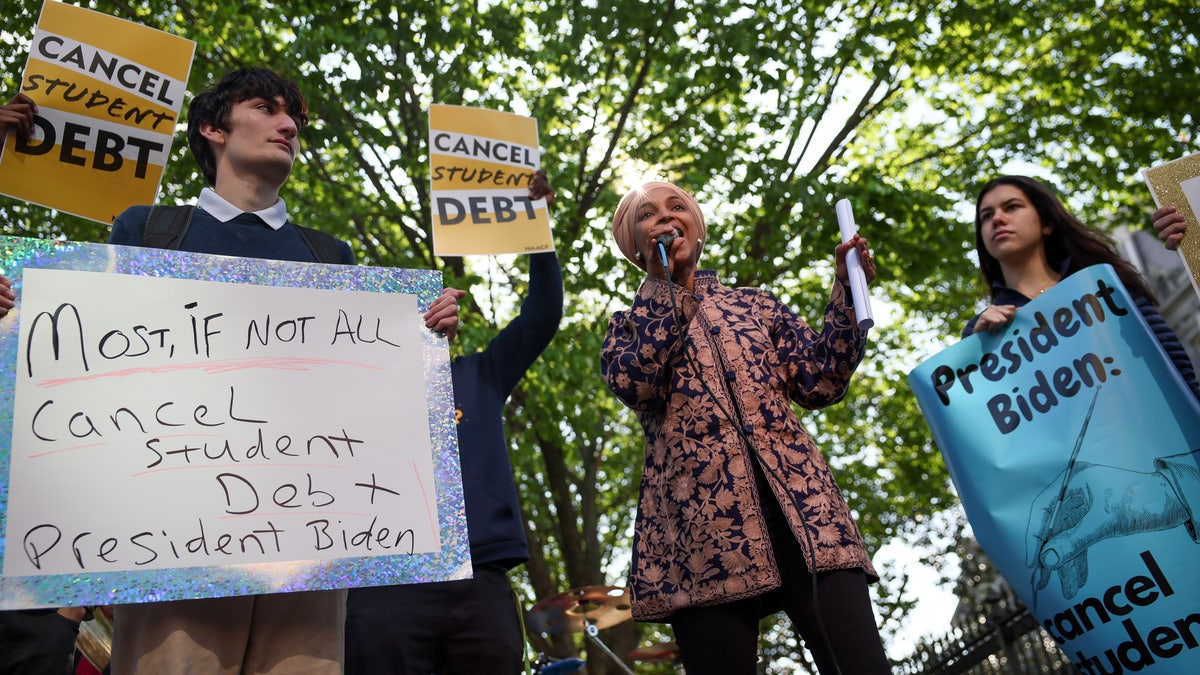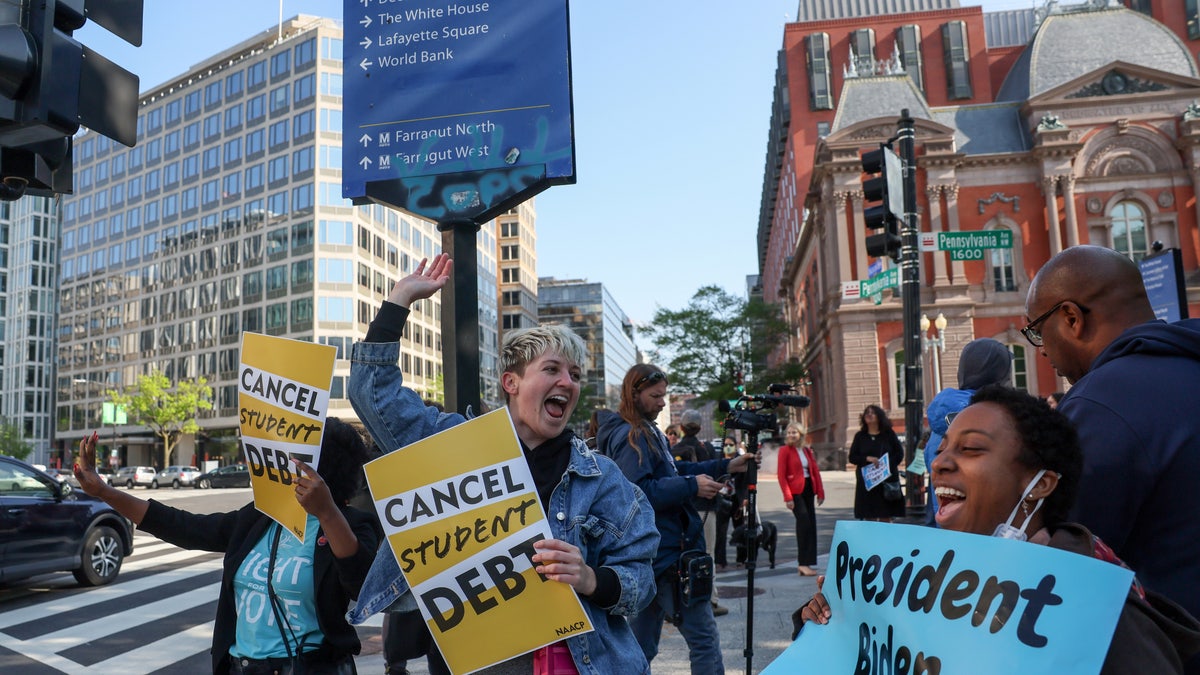Sen. Warren: There is 'no evidence' that student debt forgiveness would increase inflation
Sen. Elizabeth Warren, D-Mass., insisted on CNN that there is "no evidence" that forgiving student loan debts would exacerbate inflation.
White House officials say President Biden's decision to cancel between $10,000 and $20,000 in student debt for millions of Americans is fully paid for because of a drop in the federal deficit, an argument that suggests the full cost of the policy will just be piled on top of the national debt.
Fox News Digital has reached out to the White House multiple times over the past week about how it plans to pay for the student loan handout or if future tax hikes will be necessary.
The White House now says the handout is "fully paid for" through deficit reduction that is already occurring.
"It is paid for and far more by the amount of deficit reduction that we’re already on track for this year," said Bharat Ramamurti, deputy director of the National Economic Council.
STUDENT LOAN HANDOUT PLAN FROM BIDEN: 10 STRONG REACTIONS FROM MOMS, DADS AND MORE

President Biden tugs at his shirt collar while inside the White House. (Getty Images)
"We’re on track for $1.7 trillion in deficit reduction this year. That means, practically speaking, compared to the previous year, 1.7 trillion more dollars are coming into the Treasury than are going out. And we’re using a portion of that — a very small portion of it — to provide relief to middle-class families, consistent with the president’s plan."
Economists say the White House's comments and unwillingness to outline offsets for the student debt handout, like tax increases or budget cuts, signals it plans to just pile the money onto the $726 billion federal deficit.
FORMER EDUCATION SEC. BETSY DEVOS ON STUDENT LOAN HANDOUT: '100% ILLEGAL'
"They're just looking for any story they can tell that lets them get away from the fact that they're making the nation's finances worse," said Marc Goldwein, senior policy director at the nonpartisan Committee for a Responsible Federal Budget. "This is going to worsen the deficit. There is no way to dance around it."
Under Biden, the deficit has shrunk mainly because Congress has opted not to appropriate trillions in temporary coronavirus spending as it did at the start of the pandemic in 2020. Economists say the White House is arguing that the shrinking deficit gives the administration more money to spend on programs, like the student loan handout. But this means it won't go to debt reduction instead, forcing future taxpayers to pick up the tab.

Rep. Ilhan Omar, D-Minn., joins a demonstration outside the White House, calling for the cancellation of student debt, April 27, 2022. (Reuters/Evelyn Hockstein)
"The analogy is a family going into debt for a $100,000 medical emergency, and the next year buying a $50,000 sports car and claiming that it's ‘free’ because they are no longer spending $100,000 per year on the medical emergency," said Brian Riedl, a senior fellow in economics at the center-right Manhattan Institute.
Biden last week announced plans to forgive $10,000 in student debt for borrowers making less than $125,000 annually. Pell Grant recipients will receive $20,000 in debt handouts, provided their income is below the $125,000 threshold. Administration officials claim that no individual or household in the top 5% of earners will benefit from the decision.
The White House is also extending a pause on student loan payments through the end of the year. Coinciding with the announcement is a new Education Department proposal that allows borrowers to cap undergraduate loan repayment at 5% of their monthly income, adding to the cost to taxpayers of the handout.
Administration officials claim that the cost of Biden's student loan handout cannot be fully accounted for since it's unclear how many borrowers will opt to take advantage of the opportunity. They say that it remains unclear how many individuals would have paid back the full amount of their loans over time anyway.
"All of this, as when it comes to costs, will also depend on how many of the loans canceled were actually expected to be repaid," said White House press secretary Karine Jean-Pierre.

Activists demonstrate outside the White House calling for the cancellation of student debt, April 27, 2022. (Reuters/Evelyn Hockstein)
But others were able to come up with estimates. The National Taxpayers Union Foundation issued an analysis earlier this week estimating that the student loan handout adds nearly $330 billion to the deficit over the next decade. A budget model by the University of Pennsylvania's Wharton School of Business asserts that the average cost per taxpayer will be $2,085.
But that could be on the low end. The Committee for a Responsible Budget puts the cost of the handouts at between $440 billion and $600 billion.
CLICK HERE TO GET THE FOX NEWS APP
"If this ends up being added to the national debt, it's just going to drive up the interest costs needed to not default on that figure," said Riedl. "All of that is eventually going to drive up taxes because, at some point, you'll have to figure out a way to pay that debt."






